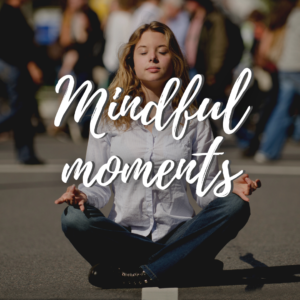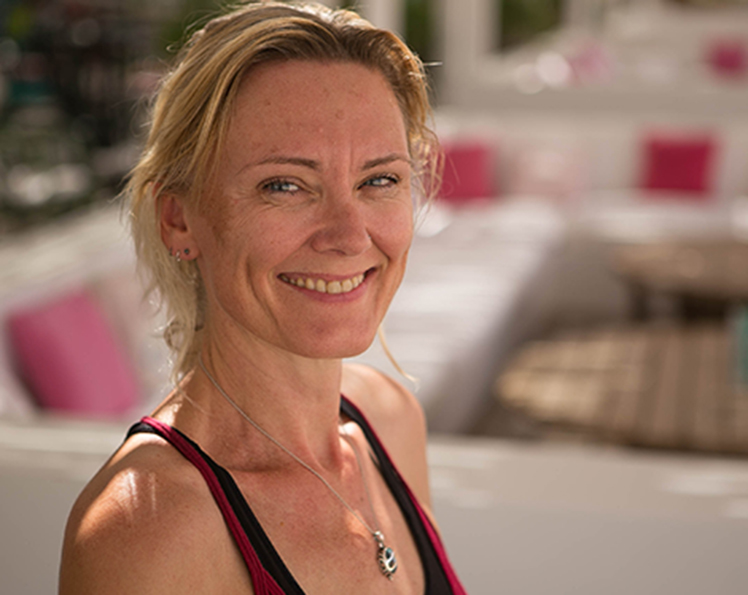If you are interested in mindfulness, you may have noticed that there are many books written about it, and that there are different types of training, courses and also visions.
What they all have in common is the gist: With Mindfulness you practice to focus your attention on the present moment and to have an attitude of openness and acceptance to whatever is happening. It is about becoming more aware of yourself, others and your environment. All without judgement.
This may sound fairly easy, but it can certainly be a challenge to actually apply this in your daily life.
Below I describe 12 misconceptions that may help you better understand what mindfulness is and what it is about.
Practicing mindfulness is not about learning to relax
For sure you might relax when you meditate, but there might be times you are not at all. Mindfulness meditation is not about achieving any specific mental state, but more about noticing whatever your experience may be. There is no right or wrong, there just is.
Mindfulness is not about trying to empty your mind of conscious thought
Instead, you learn to see your thoughts as passing mental events and to respond to them more accurately.
Mindfulness is not the same as positive thinking
When you practice mindfulness, you practice being with all states of mind: the good, the bad, and the neutral.
‘Living in the moment’ does not mean living without any regard to the future and consequences
What it means is paying attention to your experience in the present moment. The past has already happened and can’t be changed and the future will be determined by what we do now. Therefore, the present moment is the only moment where there is an opportunity to do something different.
Meditating does not mean only a sitting or walking practice
You can meditate (informally) anytime and anywhere by consciously paying attention to your experience as it occurs in the moment, without judging it. Simply be. And observe.
Mindfulness does not make your head stop thinking.
Did you know that by nature, the mind is active and always looking for new things to focus on?
When you practice mindfulness meditation, you learn to become aware of what is occurring in the present moment; you observe, acknowledge what it is, you make a mental note, for example ‘thinking’, then you let go of your thoughts and your attention returns to the breath.
And as soon as your mind wanders again, repeat the same instructions; observe, acknowledge, let go and return your attention to the breath. And all this without judgment, to yourself or others.
“My mind is too busy to meditate” is a common belief, but the main purpose of meditation is not to become calm, but to become more aware and gain insight. So yes, actually there is no excuse not to meditate. 🙂
Mindfulness is not a quick fix
It would be so wonderful if this were the case, but it takes discipline to practice mindfulness. It takes time to change or unlearn the patterns of your life, to let go of certain expectations, to be patient and to gain insight into your own processes and thinking. Trusting in the process is a helpful attitude to adopt.
With a mindfulness training of a few days or weeks you haven’t mastered it yet completely
Instead, the benefits of mindfulness will be experienced if you practice regularly
It is better to make mindfulness a part of your daily life than to practice it only when you are under stress or when things are difficult, and thinking and hoping that all problems will disappear.
Just like learning a language or playing sports: little and often is better than long and occasionally.
Mindfulness is not a miracle cure
Unfortunately. However, if you meditate regularly, it will change the way you relate to pain, stress and all these awkward moments in life. Yes, it is possible that stress and pain decrease or even disappear when you meditate (regularly for a longer period of time), but not with, for example, chronical pain. With mindfulness (meditation) you learn to stay present when you experience painful thoughts, emotions and physical sensations, and then you learn to relate to them differently. You will see the ‘stories’ you create about the pain or difficulty, and learn to let them go. And thereby letting go of the additional suffering that is often generated by ourselves.
There is no right or wrong way of being mindful
There are different types of mindfulness training and teachers. It is good to know that there is no ‘right’ or ‘bad’ way of practicing mindfulness. That’s because it’s a subjective personal experience. So, what might work for one person might not work for you. And one teacher may be a better fit for you than another.
Learning mindfulness is not a linear process
Practicing mindfulness is a lifelong journey that offers endless learning opportunities. It may very well be that you have periods when you are very aware of yourself, others and your environment, that you feel that your attention is very focused. And then you notice that you are very quickly distracted again. Or periods of mindlessness. It may also be that certain things keep coming back and that you have to learn the same lessons over and over again.
Mindfulness is not a religion
It is said that mindfulness comes from Buddhism, as the central teaching have many similarities with vipassana meditation. This is the style of meditation the buddha practiced to reach nirvana. However, it is also said that it traces its origins back to various religions (include Hinduism, Christianism, Islam and Judaism) and even secular traditions. Wherever its origins come from, today it is taught in countless secular ways.
In a previously published blog I write more extensively about the origin of mindfulness and vipassana meditation.
I hope this list helps you get a clear idea of what mindfulness is and helps you practice it more often and make it part of your daily life.
The inspiration of the content of this blog comes from one of my teachers Kain Ramsay.
Inspired and interested in learning more about mindfulness?
If you are looking for guidance, there are many options; from online to personal life contact. One teacher will be more focused on the old traditional Buddhist thinking and practice and another will be more practice oriented. Just look and feel what suits you best, at this moment in your life.
Of course, you can also contact me and we will discuss your wishes.
I give workshops and training to individuals, groups and companies. This can be done online or on location.
I myself like to combine the different angles; from ancient teachings and meditations to clear practical exercises that you can do yourself every day. The content and number of lessons depends entirely on what someone wants.
Reduce stress, enjoy more, live more consciously and increase your creativity through these simple and effective exercises. This 5-part training will help you to build in short moments for yourself.
Sign up for Mindful Moments and receive e-mails and audio files with practical tips and tricks.
Hi, my name is Jolinda, and I work as a holistic health practitioner. I provide yoga and meditation classes and massage and Reiki treatments, mindfulness training and happiness coaching,.
With my blogs I hope to inspire you to make positive changes into your life. For more ideas and tips check out my page Jolindas inspiration. Free trainings and videos you can find at free downloads and videos
Would you like to be kept informed and inspired? Then sign up for my newsletter.


